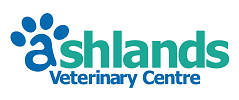Pet Physiotherapy
Veterinary physiotherapists can enhance the care and management of many common conditions working alongside the multidisciplinary team including vets, nurses, trainers and behaviourists. The ultimate aim of treatment is to return the dog to its previous level of mobility and function however even with chronic or deteriorating conditions significant gains can be made in terms of quality of life and pain relief.
These include:-
- Post-operative cases e.g. TTA and hemi laminectomy.
- Post–injury cases e.g. fractures and road traffic accidents.
- Acute soft tissue injuries or sports injuries.
- Neurological conditions e.g. intervertebral disc disease and degenerative myopathies.
- Chronic conditions e.g. osteoarthritis or joint dysplasia.
- Respiratory conditions e.g. aspiration pneumonia.
- Performance issues for sporting or working animals.
- Injury prevention.
- Obesity management.
Types of treatment
Rarely will one modality be used alone. After a thorough assessment including liaison with the veterinary surgeon, history taking and examination a package of physiotherapy treatment will be designed to meet the needs of the individual animal and their human carers.
Treatment modalities may include –
- Manual therapies e.g. joint mobilisation, spinal mobilisation, massage and myofascial release.
- Active exercise programmes for mobilising, strengthening and cardiovascular training.
- Active and passive stretching programmes.
- Balance and proprioceptive training.
- Gait re-education.
- Hydrotherapy – physiotherapy using a treadmill or pool.
- Electrotherapy e.g. ultrasound, laser, pulsed electromagnetic field, TNS and muscle stimulation.
- Thermal agents – cryotherapy and heat.
- Home programmes carried out by the owner.

